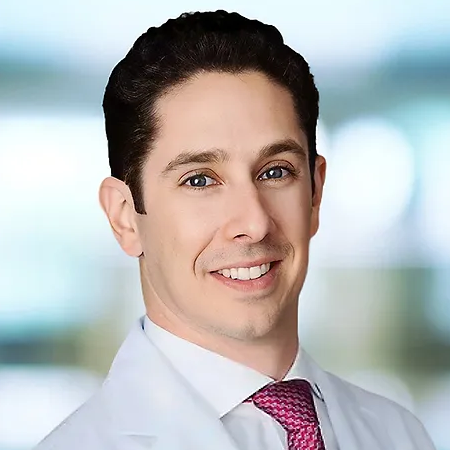Arizona Pain Treatment Centers
IO Core
How Can We Help?
IO Core
STEOCHONDRAL DEFECT PROCEDURE
Concepts for consideration: Minimally Invasive biologic and structurally supported treatment of Bone Marrow Lesions/Edemas, Cysts, Insufficiency Fractures and cartilage lesions.
IO-Core procedure:
Treatment technique utilizing biologics to decompress pain inducing lesions, edemas, cysts, insufficiency fractures by introducing high quality autologous biologic material to accelerate and promote healing of damaged subchondral bone and degenerating cartilage.
Challenge
Bone pathologies resulting from acute or chronic injury, including bone marrow lesions and osteonecrosis of the knee, cause severe pain and disability. Chronic swelling of the bone underneath cartilage is painful and can be a sign of chronic overload. It can also be a sign of lack of oxygen to the bone called avascular necrosis. The majority of these patients progress rapidly from initial diagnosis to total knee replacement surgery.
Bone pathologies resulting from acute or chronic injury, including bone marrow lesions and osteonecrosis of the knee, cause severe pain and disability. Chronic swelling of the bone underneath cartilage is painful and can be a sign of chronic overload. It can also be a sign of lack of oxygen to the bone called avascular necrosis. The majority of these patients progress rapidly from initial diagnosis to total knee replacement surgery.
Osteoarthritis can be viewed as a group of overlapping disorders, which results mainly in functional joint failure. Symptomatic OA is linked with bone marrow lesions and BMLs patterns from magnetic resonance images (MRI) have been linked with pain and cartilage degeneration (Alliston et al. (2018).
Recent work focusing on the bone–cartilage interface in OA and the deeper underlying bone has revealed that Bone Marrow Lesion development is a crucial step in OA pathogenesis. Bone pathologies resulting from acute or chronic injury, including bone marrow lesions and osteonecrosis of the knee, causes severe pain and disability. The majority of these patients progress rapidly from initial diagnosis to total knee replacement surgery.
When damage persistently exceeds repair or bone is unable to heal with periods of rest or unloading, a chronic bone marrow edema lesion (BME/BML) develops. Felson et al (2001) had shown that patients with painful knee OA were 2.5 times as likely to have BME, compared with asymptomatic subjects.
There is a correlation of chronic bone marrow lesions/ edemas with knee pain and progression of osteoarthritis. These lesions have also been associated with other degenerative conditions such as meniscal tears, cartilage deterioration, subchondral cyst formation, mechanical malalignment, and ultimately progression to arthroplasty (Collins et al. (2013).
Treatment options
Some bone marrow lesions respond to a course of conservative measures, prior to proceeding with surgical intervention.
Conservative
• Rest, oral non-steroidal anti-inflammatory drugs, physical therapy, low impact activity, and weight loss.
• Unloader bracing can be particularly helpful as these lesions may calm down with decreased load across the joint.
Minimally Invasive
• Injections of corticosteroids and viscosupplementation.
Surgical
• Arthroscopy, subchondroplasty, debridement, osteotomy, osteochondral defect repair, unicompartmental/total knee arthroplasty.
Mechanical/Structural Support
Standard subchondroplasty (SCP) is a minimally invasive technique in which osteoconductive bone void filler (calcium phosphate) is injected into the subchondral bone that corresponds to the area of bone marrow edema on MRI. The injected bone substitute/Calcium phosphate is intended to stabilize the subchondral bone mechanically and may provide pain relief through bone reconstitution with time.
Concerns with providing calcium phosphate as structural support for treatment of BML’s have been documented in recent studies.
Forced pressurization of the calcium phosphate during delivery can also lead to overfilling the lesion and extrusion into the joint which may cause postoperative pain (Rebolledo et al. (2018).
A recent study by Chatterjee et al., (2015) reported no benefits with calcium phosphate in patients with symptomatic bone marrow edema lesions of the knee and advanced OA.
Biological Support
• Intraosseous, intralesional injections: Bone Marrow Concentrate rich in stem cells and growth factors are injected into the non-healing insufficiency fracture/lesion, provide biological support of symptomatic, non-responsive BML’s. Bone marrow aspirate/concentrate has been widely used in orthopedic application to treat bone fusion/healing. Autologous Bone Marrow Aspirate (BMA) is a cellular-based graft that contains Mesenchymal Stromal Cells (MSC) and Growth Factors (such as Bone Morphogenic Proteins 2 and 7) that can signal osteogenic and osteoinductive potential to the osteoconductive scaffold. Resulting in the ability of damaged bone to heal.
• Core Decompression with Autologous BMA vs Allograft: Good quality data is available to support use of core decompression for treatment of necrotic bone in femoral head (Avascular Necrosis).
The biologic approach has been made to treat these pathologies by performing a core decompression of the lesion and augmenting it with direct application of allograft (demineralized bone matrix), or autograft combined with PRP or bone marrow aspirate. Autograft is a more natural approach for bone repair as it uses the body’s own tissue and eliminates the risk of rejection or complications. Autograft cancellous bone offers osteogenic, osteoinductive and osteoconductive properties to support the bone healing process. Autogenous Iliac Crest Bone Graft (ICBG) has been the “gold standard” in the orthopedic space but, may lead to complications, such as chronic pain, numbness and infection. Allograft is derived from an organ donor and sterilized. The use of allograft runs the potential risk of immune response complications such as rejection or failure to integrate into the tissue. Irradiated allografts have reported to have lower success rate in younger patients as compared to autograft (Shun-LiKan et al (2016).
IO-Core Procedure
Is the newest treatment progression for osteoarthritic pain associated with Bone Marrow Lesions. This comprehensive and all-natural approach to healing combines a core decompression, an intraosseous injection of autologous BMA, and placement of autologous bone dowel. As previous studies have shown: core decompression will relieve edema and allow healthy blood flow back into the area, Bone Marrow Aspirate Concentrate provides the necessary regenerative cells for osteoinduction, and an intact bone core/dowell provides a healthy scaffold/surface for osteoconduction (new healthy bone growth).
• Core decompression is the procedure that relieves pressure by drilling directly into injury site. • Studies have shown a strong correlation to the number of CFU-F and positive clinical outcomes. The higher the CFU-F counts in bone marrow samples means stronger clinical outcomes (Hernigou et al (2005).
• Aspirating high quality marrow and combining with a functioning scaffold for transplantation into a bone defect (Bone Marrow Lesion) replicates the body’s natural healing response at the treatment site.
• Intact bone core/dowel is an autograft harvested from the iliac crest or long bone in a less invasive manner. Harvesting an intact bone core avoids donor site morbidity previously associated with ICBG. These grafts integrate better and support the bone modeling process needed for healing. Previous studies have demonstrated that autograft combination with cellular graft bone marrow aspirate (containing high MSC count) better supports bone healing as compared to graft alone.
IO-Core osteochondral defect procedure provides surgeons with the highest quality autologous biologics and technique to treat patients suffering from debilitating pain caused by bone marrow lesions, edemas, cysts, insufficiency fractures associated with acute and/or chronic injuries such as osteoarthritis.
Evidence
➢ Significant improvements in both pain and function following subchondroplasty through 2 years postoperative follow-up have been reported (Cohen et al. 2016).
➢ Bonadio et al. (2017) reported the sub chondroplasty technique safe and provide significant improvements in pain and functional scores.
➢ Astur et al. (2018) in his meta-analysis concluded that calcium chloride injection to treat bone marrow lesions decreased pain, improved function and a delay in TKA.
➢ A recently published study from Hernigou et al. (2018) reported subchondral autologous bone marrow concentrate was an effective procedure for treating young patients with knee osteoarthritis following secondary ON of the knee related to corticosteroids.
➢ Application of bone marrow aspirate in combination with core decompression surgery (CDS) improves pain and function measures and long-term hip survival in ONFH cases (Hernigou et al.(2009); Gangi, et al. (2011); Daltro, et al. (2015).
➢ Hernigou et al. (2005) percutaneous autologous bone-marrow grafting is an effective and safe method for the treatment of an atrophic tibial diaphyseal nonunion. However, its efficacy appears to be related to the number of progenitors in the graft, and the number of progenitors available in bone marrow aspirated from the iliac crest
Browse New Procedures
View Additional Treatments
Is Pain Getting in the Way?







